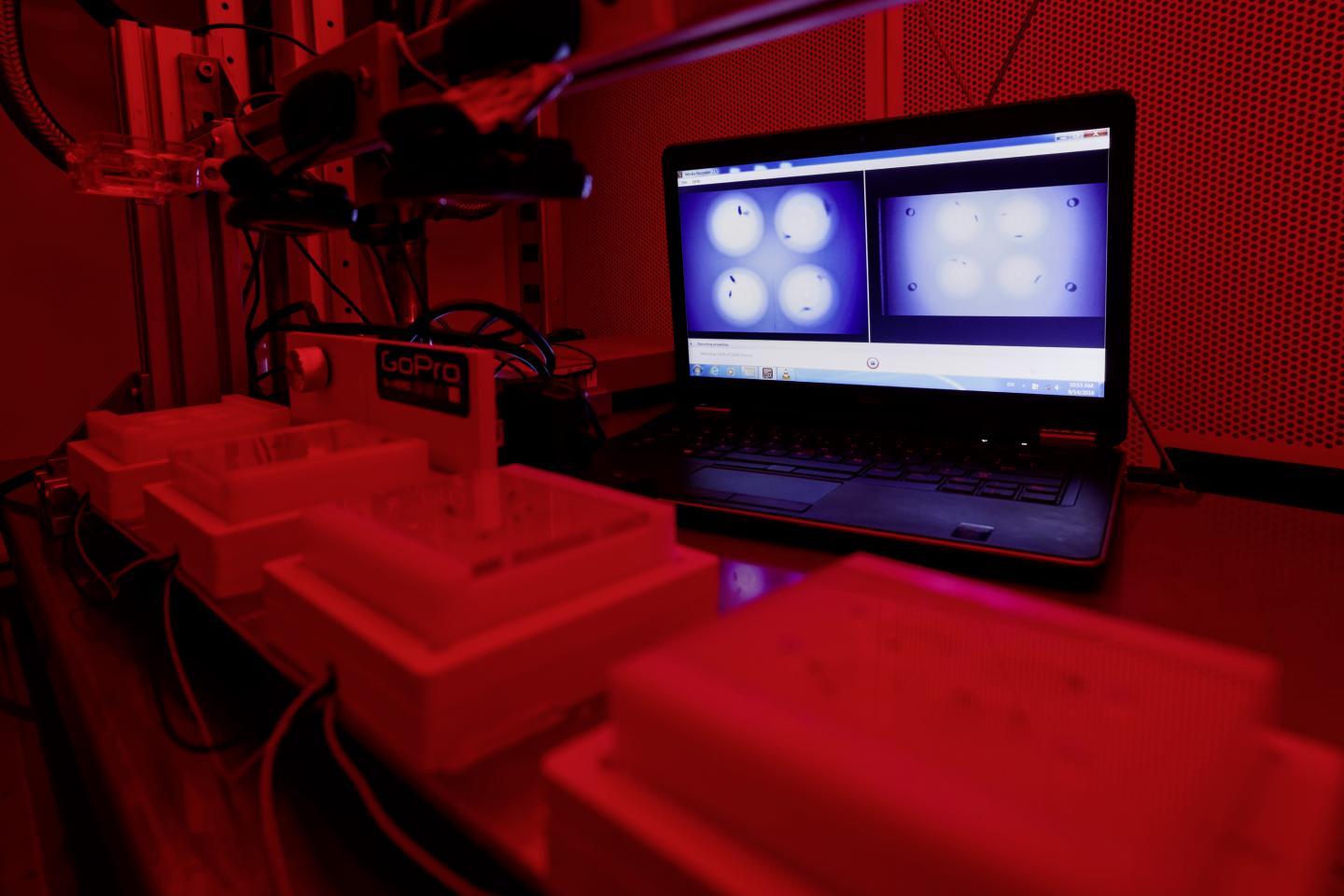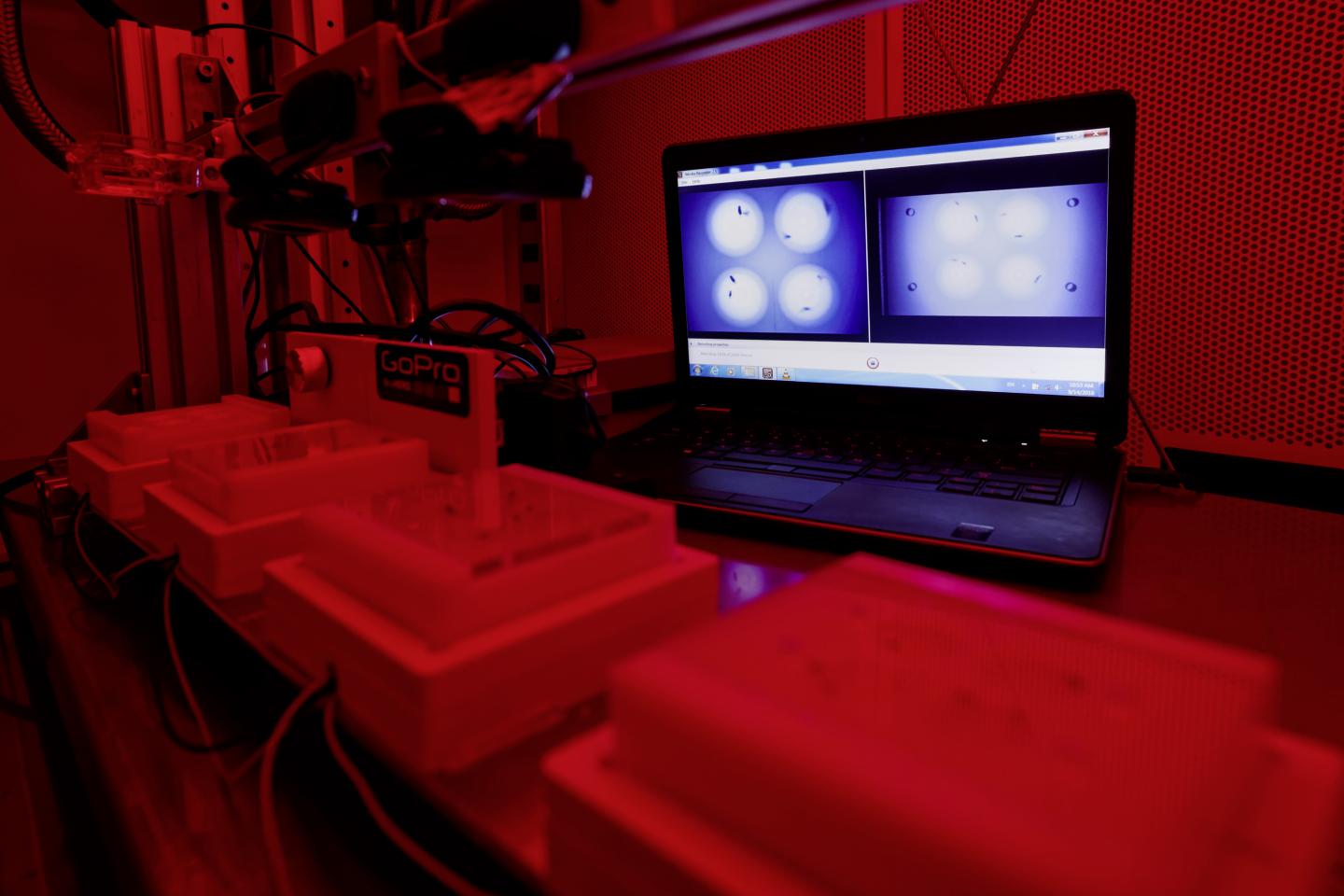
Credit: Anna Schroll
Markus Knaden and Bill Hansson, and their colleagues at the Department of Evolutionary Neuroethology, study ecologically relevant odors in the natural environment of insects, especially vinegar flies. In this new study they focused on a deadly smell: the odor of conspecifics which have a lethal bacterial infection.
"We had originally hoped to find a dedicated neuronal circuit in the flies which is specialized to detect and avoid sickness odors. Instead we observed that healthy flies were especially attracted to the smell of infected ones. When we realized that flies cannot avoid becoming infected, as sick flies produce particularly high amounts of pheromones, we were surprised but found that even more interesting," says Markus Knaden, one of the leaders of the study.
State-of-the-art analytical methods enabled the researchers to identify and quantify the odors of single flies. Vinegar flies which suffered from bacterial infection and their feces emitted dramatically increased amounts of the typical odors that attract other flies. The hypothesis that last-minute pheromone emission by sick insects would enhance their reproductive success turned out to be wrong, as mating assays demonstrated that sick flies were barely able to copulate.
Insect immunologist Nicolas Buchon from Cornell University and his team, who were also involved in the study, noticed that the increase in pheromone production matched the up-regulation of certain immune responses in the flies. Ian Keesey, the first author of the study, and his colleagues in Jena therefore tested mutant flies which lacked the ability to produce these responses and found that these flies emitted far fewer pheromones when they became infected in comparison to sick wild-type flies. Further analysis of the insects' metabolism convinced the researchers that ongoing bacterial growth and the subsequent damages caused by the pathogens are necessary to induce increases in pheromone production.
The scientists observed similar results when they conducted experiments with other fly species. Seven other Drosophila species as well as the yellow fever mosquito Aedes aegyptii conspecifics dramatically changed their olfactory profile after infection with the pathogen. Manipulation of social communication in insects by pathogenic bacteria seems to be a more general phenomenon in nature than thought.
Markus Knaden hopes that the new insights can one day contribute to useful applications: "A well-established method to combat insect-transmitted diseases and to control agricultural pest insects is the use of pheromone traps. By infecting insects with bacteria we could generally increase their pheromone emission. This could enable us to identify novel pheromones in species that have not been investigated so far."
###
Original Publication:
Keesey, I. W., Koerte, S., Khallaf, M. A., Retzke, T., Guillou, A., Grosse-Wilde, E., Buchon, N., Knaden, M., Hansson, B. S. (2017). Pathogenic bacteria enhance dispersal through alteration of Drosophila social communication. Nature Communications DOI: 10.1038/10.1038/s41467-017-00334-9 http://dx.doi.org/10.1038/10.1038/s41467-017-00334-9
Further Information:
Prof. Dr. Bill S. Hansson, Max Planck Institute for Chemical Ecology, Hans-Knöll-Str. 8, 07743 Jena, +49 3641 57-1401, E-Mail [email protected]
Dr. Markus Knaden, Max Planck Institute for Chemical Ecology, Hans-Knöll-Str. 8, 07743 Jena, +49 3641 57-1421, E-Mail [email protected]
Contact and Media Requests:
Angela Overmeyer M.A., Max Planck Institute for Chemical Ecology, Hans-Knöll-Str. 8, 07743 Jena, +49 3641 57-2110, E-Mail [email protected]
Download high-resolution images via http://www.ice.mpg.de/ext/downloads2017.html
Media Contact
Dr. Markus Knaden
[email protected]
49-364-157-1421
http://www.ice.mpg.de
Related Journal Article
http://dx.doi.org/10.1038/10.1038/s41467-017-00334-9





